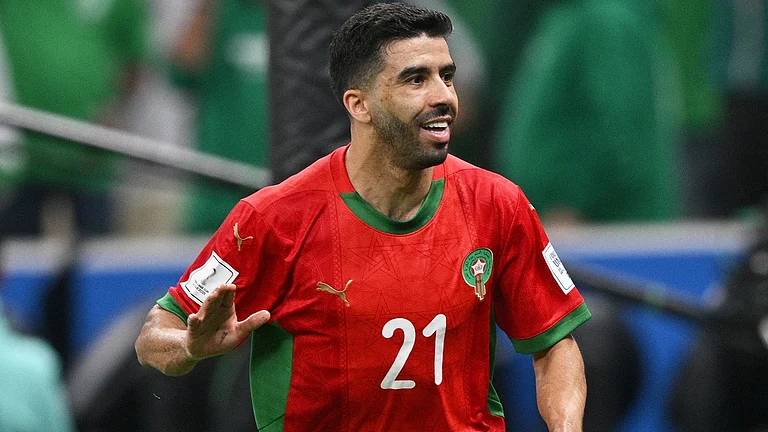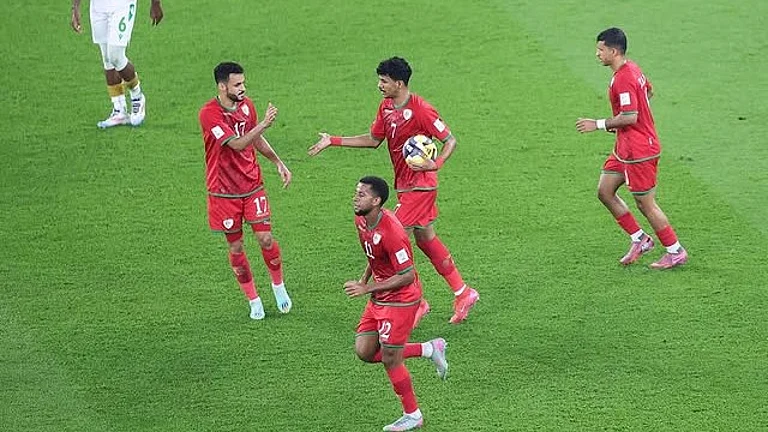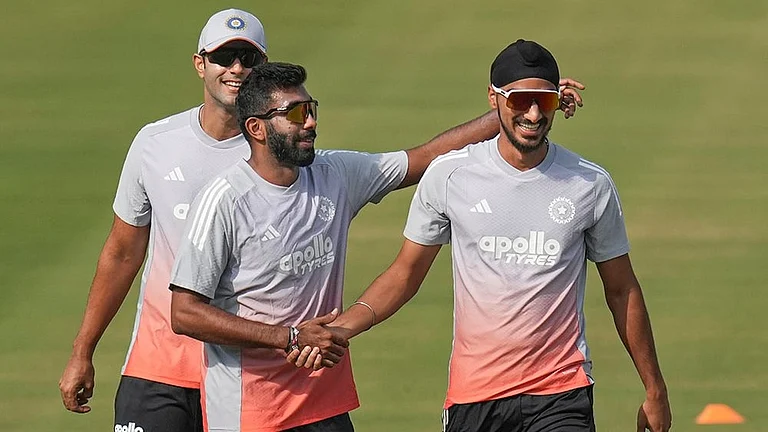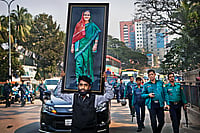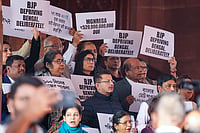Hindi may not be accepted as India’s official language by many non-Hindi-speaking states of the country, but successive Indian governments have spent time, money and energy to promote Hindi both at the United Nations in New York and across the world through its missions abroad.
When India won independence from the British, English was seen as the language of the colonisers and rejected by nationalists for its association with the former rulers. In 1950, when the Indian Constitution came into force, the idea was to replace English with Hindi over a period of 15 years. But it was much easier said than done, with the southern states putting up stiff resistance at the imposition of a north Indian language. However, both the NDA and the UPA had, over the years, pushed for the spread of Hindi abroad. The thrust on taking Hindi overseas was mainly to keep Indian culture alive in countries that have a sizeable proportion of Indians. These were the children of former indentured labourers in Mauritius, Fiji, Suriname, Guyana, as well as Trinidad and Tobago. Many of their forefathers were Hindi speakers, so New Delhi hoped to establish linkages with these communities through Hindi. Now with the Indian diaspora spread across the world, and speaking a variety of languages, it makes little sense to promote just one Indian language. However, what began in the early years continues despite the changing profile of Indians settled abroad.
ALSO READ: Let A Language Contend
The late foreign minister Sushma Swaraj was at the forefront of the move to get the UN to accept Hindi as a UN official language. At present, the UN recognises six languages: Arabic, English, French, Spanish, Russian, and Mandarian. Sushma Swaraj and India’s former ambassador to the UN, Syed Akbaruddin, worked together on this. Changes in the functioning of the world body are wrapped in red tape and getting the UN to add one more language was difficult. So, they opted for the next best thing. Hindi was accepted as a UN language for communication, but not for official work. India had to pay a large sum of money for this, but Akbaruddin refused to divulge the amount, simply saying: “It is not much. I can say that it is not even half the annual budget spent on promoting Hindi.” Hindi is now one of the three ‘unofficial’ languages of the UN. The other two are Portuguese and Kiswahili (Swahili). What does this mean? The UN website can be accessed in Hindi. Hindi writers and journalists were recruited in New York for translations of all that went into the UN website. All UN public statements are now available for Hindi researchers, journalists and the general public. Whenever an Indian leader delivers a speech in Hindi at the UN, the interpretation is provided by India. As of now, this is how the matter stands in the UN.
The effort to push Hindi is not confined to the BJP. The Congress government had been equally enthusiastic. In fact, the UPA initiated World Hindi Day in 2006. It has since been an annual event in the calendar of all Indian missions abroad. Essay competitions, Hindi language quiz competitions or inviting well-known Hindi authors and scholars from India as guest speakers for the occasion are ways to promote the language. The World Hindi Conference was also a Congress government initiative, first held in 1975 by Rashtrabhasha Prachar Samiti that was set up in the 1930s by Mahatma Gandhi in Wardha.
Since then, the Ministry of External Affairs (MEA) regularly funds and organises World Hindi Conferences in different parts of the world. The second was in Port Louis in Mauritius in 1976, the third in Delhi in 1983, the fourth in Port Louis again in December 1993, the fifth in the Port of Spain in Trinidad and Tobago in 1996, sixth in London in 1999, the seventh in Suriname in 2003, eighth in New York in 2007, ninth in Johannesburg in 2012, 10th in Bhopal in 2015, and the 11th in Mauritius in 2018. There is no set pattern for holding the conference—sometimes these are held in a space of three years. The Indian Council for Cultural Relations (ICCR) sends out Hindi teachers to Indian cultural centres abroad including university-level Hindi professors to head chairs established in various foreign universities. It also awards scholarships to foreign students interested in mastering the language. The World Hindi Secretariat was set up and inaugurated in 2008 in Mauritius, but the process was initiated during the Vajpayee era when the first MoU was sealed in August 1988. India has funded the secretariat building that amounted to around Rs 14 crore.
For all the effort put in by the Indian government to propagate Hindi abroad, the attempt has been lacklustre and unimaginative. If the idea to keep holding World Hindi Conferences and paying lip service is not enough, there should be an overhaul of the entire policy. “Promoting the Hindi language is a laudable objective, but the way successive governments have gone about it is all wrong. First of all, there is no actual policy in place,” says Ashok Vajpeyi, renowned Hindi poet, writer, and critic. “The World Hindi Conferences are the most unimaginative, inconsequential, badly organised and poorly structured events.” He believes that the MEA, which handles these conferences, has neither the in-house expertise nor the time and manpower to organise them. “It enables all kinds of mediocre writers to take a free ride,” he explains. He believes that such literary events in Hindi should not be handled by the MEA. Only people having the interest and knowledge of the subject should organise the conferences. Indian missions abroad can facilitate the event in whichever country it is held, but the planning and execution should be left to experts. The teachers sent out by the ICCR are, with some notable exceptions, average and lack communication skills.
Vajpeyi recalled that in the past, the Soviet Union and former members of the Communist bloc encouraged the learning of Hindi. At that time, there were nearly 150 centres and institutes where Hindi was taught. That number, he says, must have declined. But some of the finest research work on Hindi was done in places like Warsaw and Berlin. After the break-up of the Soviet Union, many such institutes shut down as there was no support from the government. “India should have stepped in with funds,” he says. The emphasis, he says, should now be on not just Hindi but other Indian languages like Bengali, Marathi, and Tamil, as the Indian diaspora has grown across the globe and is no longer confined to generations that went as indentured labour. India needs to take a long hard look at its current policy of spreading Hindi and tweak it to make an effective vehicle for promoting Indian languages.
(This appeared in the print edition as "Hindi Beyond Hindustan")
ALSO READ









